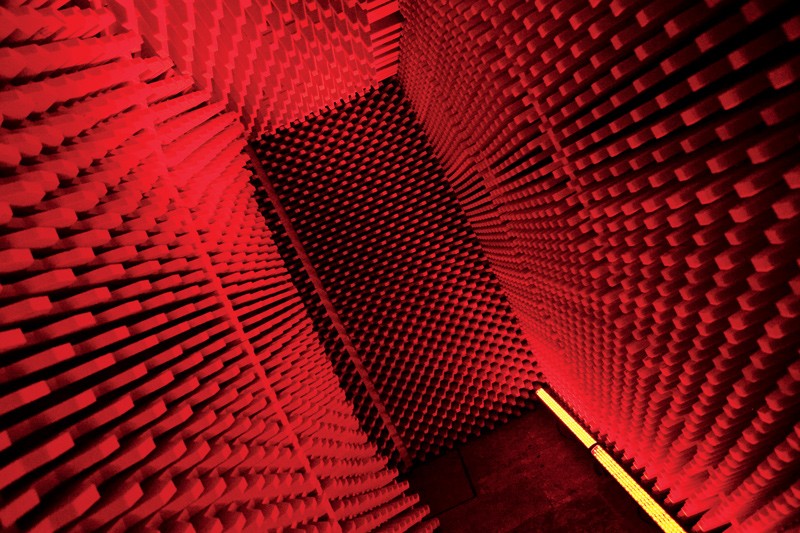Chris Briffa Architects. Team: Chris Briffa, Justin Schembri, Joe Galea, Michael Quinton, Alex Spiteri Gingell, Andrew Doneo, Ryan Xuereb, Lily Agius, Maggy Mitter and Matthew Pandolfino Sponsor: Halmann Vella Ltd, Ecotechnique, Doneo and Nexos Lighting Technology
Architecture has always been a craft of logic and reason. The profession can also be considered a ‘talent’ by uniting it with a creative reflex. When an individual creates something, be it an object, a sound, a building — anything that can be acknowledged on a perceptual level — he is taking on the mantle and role of ‘the artist’. Whether or not he may be considered a good artist — that, as always, depends.
On the other hand, ‘the scientist’ solves, reasons and deduces — he performs the act of thinking. When an individual is faced with an obstacle, he is impelled to the point of obligation to provide a solution. He is obliged to crunch numbers and use his problem-solving abilities to remove the obstacle. Some consider finding the solution to a problem a wholesome, satisfying feeling.But there is an immediate flaw in the above artist-scientist distinction. If we claim that the artist’s role is to create and the scientist’s role to think, the question is instantly raised: is not the scientist’s “thinking” simply a means to an end, that end being the creation of something? Does an artist, who “creates”, not think or reason as well? Nothing worthwhile can come from careless thoughts, and good artists and scientists do not fall into the trap of half-baked ideas.
The truth is that while the ultimate goals of the artist and scientist differ, on a more metaphysical level they are both thinkers and creators. Perhaps the concept of art and science being separated has become more redundant with the passage of time.Silence in Strait Street was an experiment in solving an acoustical problem in an elegant way. Our brief: to create an acoustically insulated space in Strait Street that simulates a low-echo, quiet room, somewhat similar to anechoic chambers of recording studios. Luckily for us, typical solutions to this self-imposed problem are appealingly aesthetic. Initially we wanted to physically (by working with certain types of materials) recreate a high quality, acoustically absorbent enclosure, but we soon modified our ideas due to realistic budget constraints: acoustic insulation materials (be they foam or fibreglass) are extremely costly.
The sound engineers in our workgroup suggested — and went on to produce — a very particular sound that would help simulate silence. It compensated for the use of less adequate insulating materials. This sound may be described as a sort of pulse, almost like heartbeats, that steadily crescendos into silence. The brief, “false” second silence would be created by a sudden absence of sound. We imagined it as a sort of silence of contrasts, similar to the way rests work in written and performed musical scores.
“Perhaps the concept of art and science being separated has become more redundant with the passage of time”
With this sound prepared, we set out to design our enclosure. Many solutions and permutations were investigated in an organised, almost scientific way. Some of these solutions were drawn and modelled, then scrapped. But it was a productive scrapping, and each time we learnt something new.
Our design was concluded a few weeks before the launch of the first edition of Science in the City. The finalised design involved the water-jet cutting of rigid thermal insulation boards that would form the imagined enclosure. The linear distance of water-jet cutting was over 1.2km! Large rectangular panels of acoustic insulation were cut into six smaller, now slender, pieces. These foam cut-outs now had a carefully designed saw-tooth profile, which allowed us to reduce waste drastically, since “negatives” of our cutting process became “positives” instead of being discarded. Each of these wedges had small 16mm holes punched at their ends. When these wedges were slid through the metal rods and baseplates we had prepared, the interlocking mechanism created large walls with a texture like an egg carton. Amusingly enough, egg cartons are often considered the poor man’s acoustic insulation and are often used to insulate areas where bands practise.
Construction began hectically a few days before the event’s opening. There were stability issues that required immediate resolving on site as well as other technical issues with lighting and sound.As Science in the City was opening, at 7 pm our installation was launched. The crowd’s reaction — and, more importantly, their attitude — was excellent. People were intrigued and interested. We also achieved our ultimate goal since the acoustic performance of our enclosure worked surprisingly well, which was a relief to all of us.
The entire experience, from inception to completion, was a typical collaboration between ‘the sciences’ and ‘the arts’. Without our ‘scientific’ study in acoustics, this entire exercise would have had no point, and without a strong ‘artistic’ visual element tying it all together, the events outcome would have been less satisfying. Art-Science collaborations like Silence in Strait Street are regular occurrences, even the most cynical amongst us would be forced to admit that most professions which concern themselves with the manipulation of the physical world need both the arts as well as the sciences to continue to function and survive.
– Red Rum, Red Room. Art critic Lisa Gwen Baldacchino on Silence in Strait Street:
“the claustrophobic redness engulfing, soothing, menacing. A rising hum threatens to deafen; yet as fast as it began, it subsides. The mood lingers, it pervades. It seeps within, with an unbeknownst clarity. And it commences all over again. On a loop, loop, loop, loop…”
Part of Science in the City, Malta’s Science and Arts Festival
For more stories click here





Comments are closed for this article!